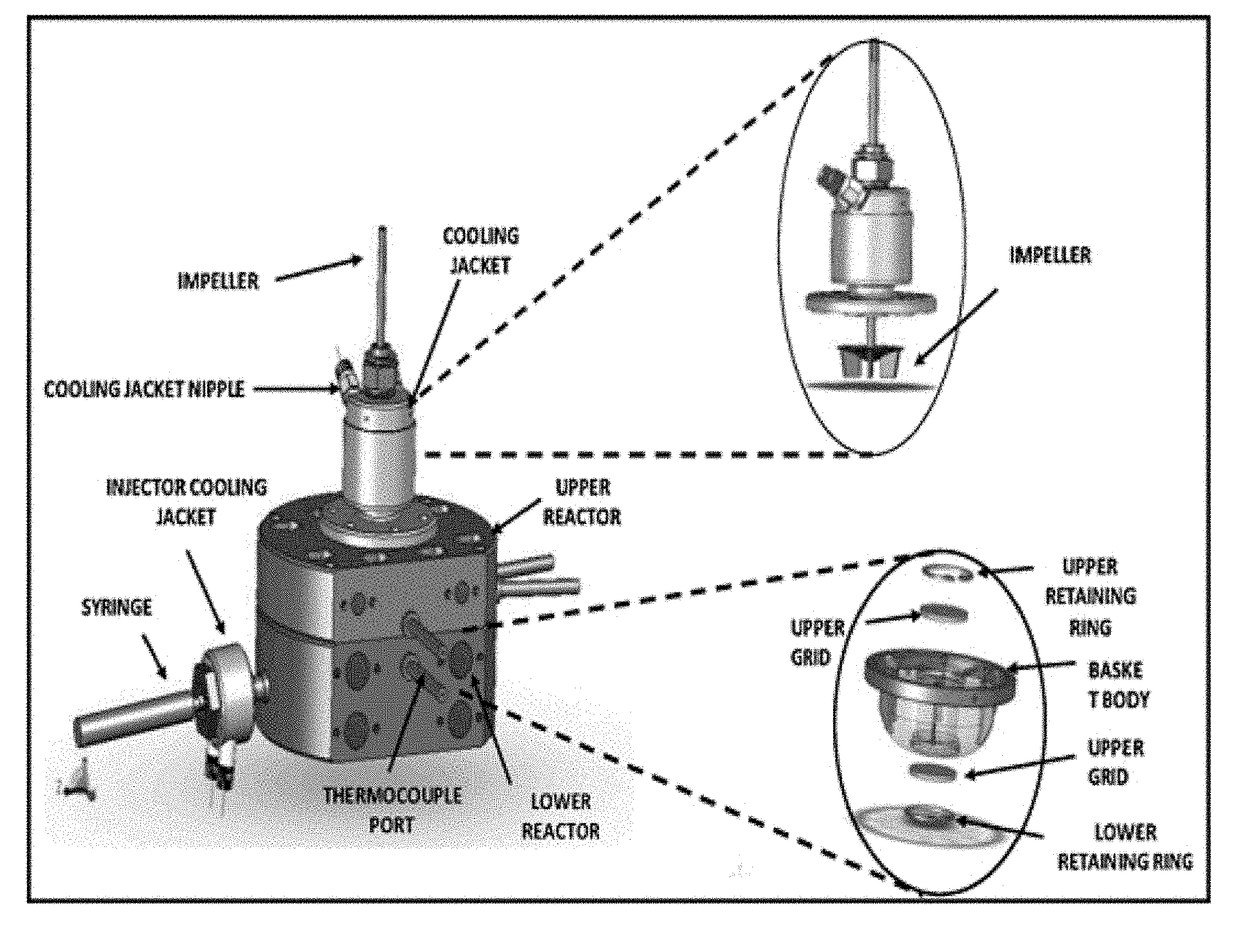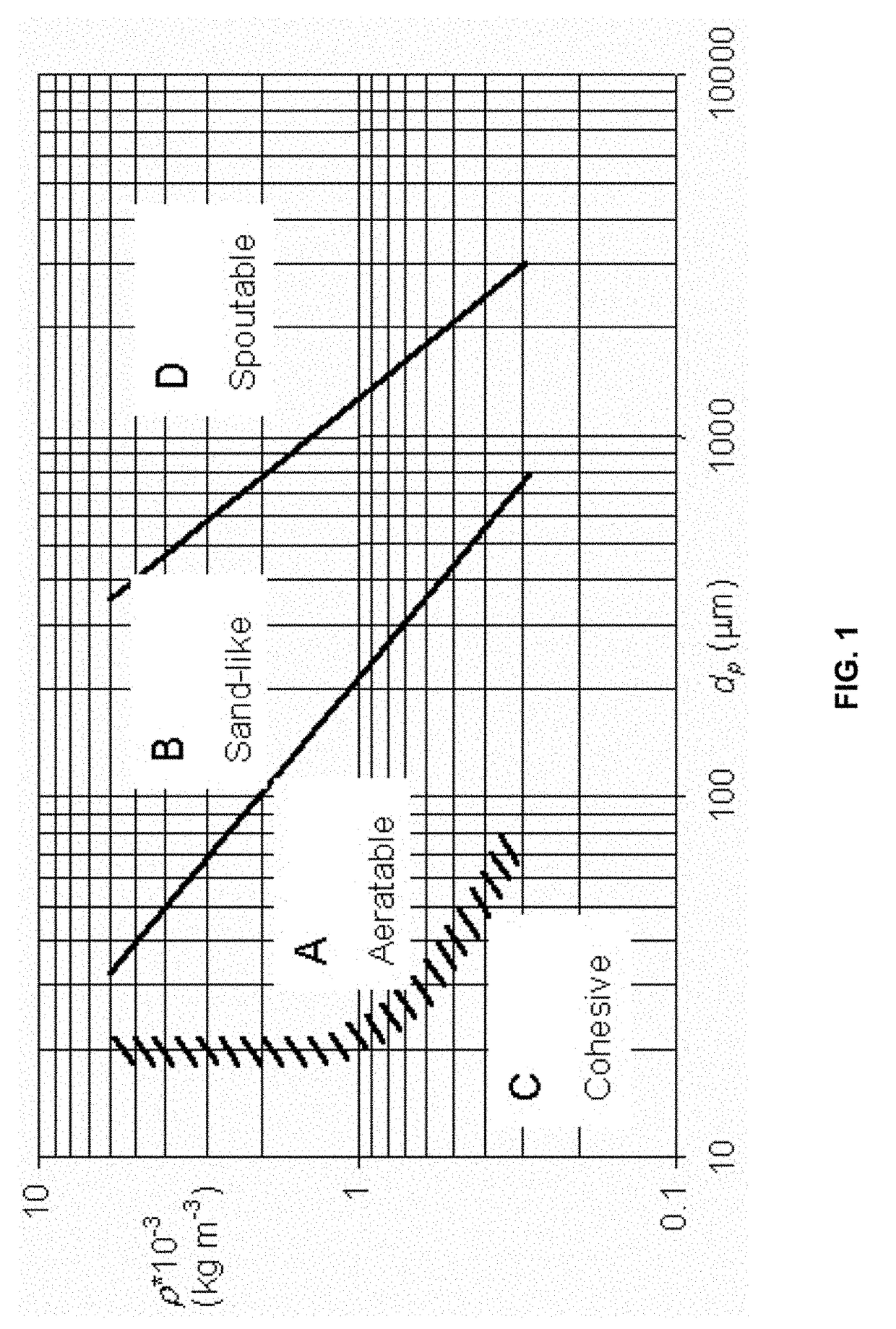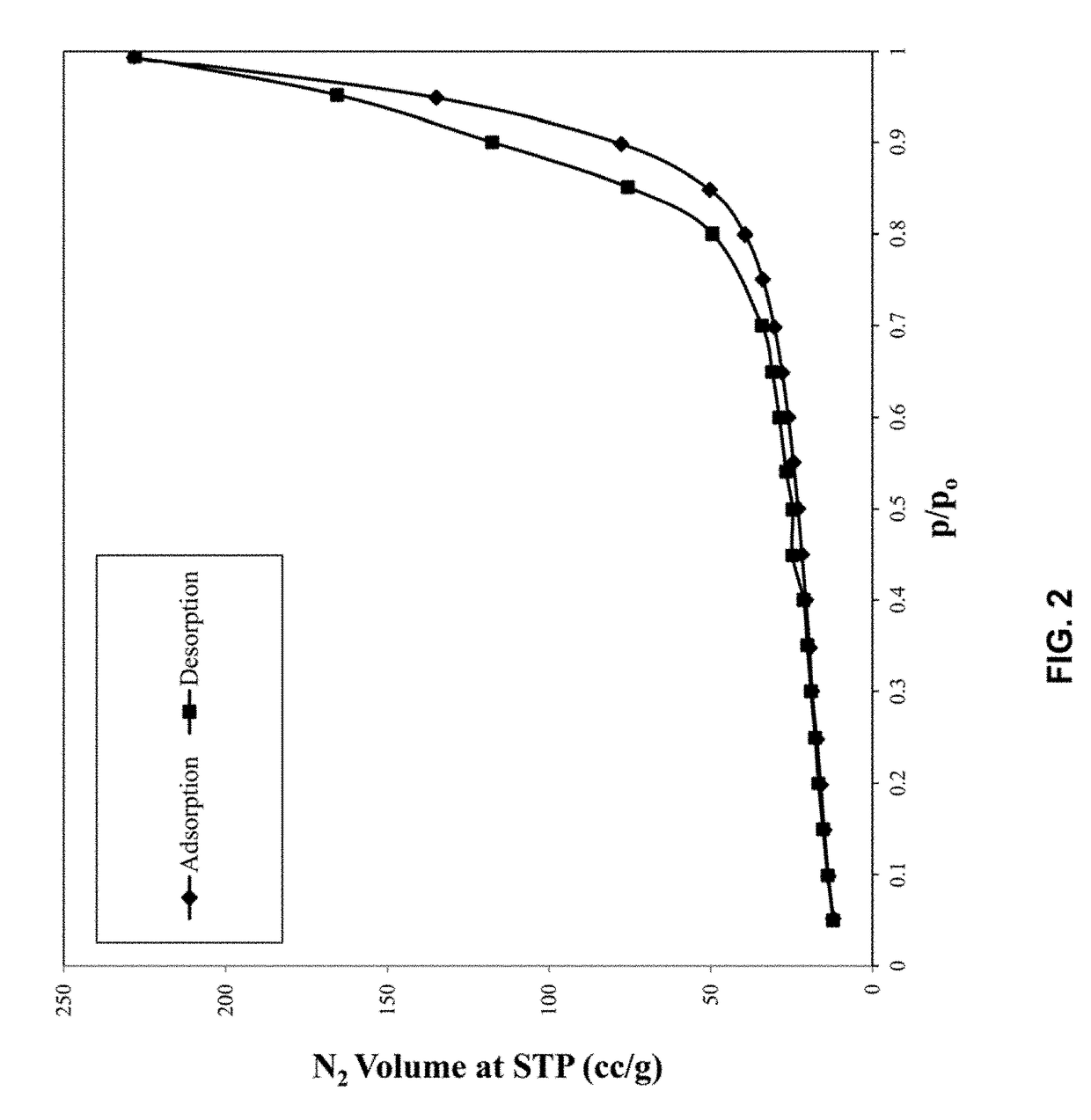Fluidizable alkane dehydrogenation catalyst
a vanadium-based catalyst and alkane-oxidation technology, which is applied in the direction of catalyst activation/preparation, metal/metal-oxide/metal-hydroxide catalyst, hydrocarbon preparation, etc., can solve the problems of high ethylene production cost, and more expensive approach to produce ethylene. , to achieve the effect of enhancing the reducibility of one or more vanadium oxides and enhancing the interaction
- Summary
- Abstract
- Description
- Claims
- Application Information
AI Technical Summary
Benefits of technology
Problems solved by technology
Method used
Image
Examples
example 1
Catalyst Preparation
[0077]Impregnation by a soaking (excess of solvent) technique was used to prepare catalyst samples [M. A. Bañares, M. V Mart, X. Gao, J. L. G. Fierro, and I. E. Wachs, “Dynamic behavior of supported vanadia catalysts in the selective oxidation of ethane in situ Raman, UV-Vis DRS and reactivity studies,” vol. 61, pp. 295-301, 2000—incorporated herein by reference in its entirety]. Before metal loading, the alumina support was calcined under pure N2 flow at 500° C. for 4 h, to remove moisture and volatile compounds. The calcined sample was placed in a beaker and toluene was added. Zirconium tetrachloride was then added to the beaker, and the mixture was left under stirring for 12 h. The sample was filtered from the solvent and dried at ambient conditions. After complete drying, the sample was calcined again at 500° C. for 5 h to remove the solvent. Three support samples were prepared with γ-Al2O3 / ZrO2 weight ratios of 2:1, 1:1 and 1:2.
[0078]Accordingly, three catal...
example 2
Elemental and BET Surface Area Analyses of Catalysts
[0079]XRF analysis was used to determine elements and compound ratios in each sample after synthesis. A Bruker Tornado M4 Micro-XRF Analyzer, equipped with a single High Performance XFlash Detector and a 25 μm diameter spot size, was employed for XRF analysis.
[0080]The nitrogen adsorption and BET surface area of the VOx / Al2O3-ZrO2 catalyst samples were determined in a Quantachrome ASIQwin. The nitrogen adsorption was carried out at 77 K. For each experiment, 0.40-0.50 g of catalyst sample was degassed at 350° C. for 2 h. The adsorption isotherms were measured in the 0.04 to 1 kcal / mol relative pressure range.
[0081]The XRF results as shown in Table 1, indicate that compound percentages are equal to what was targeted, with a slight deviation. The nitrogen isotherm analysis was conducted to understand the adsorption / desorption characteristics of the catalyst sample. FIG. 2 shows the adsorption / desorption isotherms of a ZrO2 modified V...
example 3
X-ray Diffraction Analysis of Catalysts
[0083]X-ray diffraction (XRD) analysis was conducted to identify the crystallographic structure of catalyst samples, XRD patterns of all catalysts reported in this study, were recorded on a Rigaku MiniFlex Diffractometer with monochromatic Cu Kα radiation (λ=0.15406 nm, 30 kV, 15 mA) using the normal scan rate of 4° / min. X-rays were collected using a 1.25° divergent scattering slit, and a 0.13 mm receiving slit. Samples were scanned within the 2θ range of 20-80° with a step size of 0.005°.
[0084]FIG. 3 shows the XRD patterns of the various γ-Al2O3 / ZrO2 containing support samples and the VOx / γ-Al2O3-ZrO2 catalyst after VOx loading. The V2O5 was detected in the range of 2θ from 10 to 40° [F. Klose, T. Wolff, H. Lorenz, a Seidelmorgenstern. Y. Suchorski, M. Pierkowska, and H. Weiss, “Active species on γ-alumina-supported vanadia catalysts: Nature and reducibility,” J. Catal., vol. 247, no. 2, pp. 170-193, April 2007—incorporated herein by reference...
PUM
| Property | Measurement | Unit |
|---|---|---|
| temperature | aaaaa | aaaaa |
| reaction temperature | aaaaa | aaaaa |
| temperatures | aaaaa | aaaaa |
Abstract
Description
Claims
Application Information
 Login to View More
Login to View More - Generate Ideas
- Intellectual Property
- Life Sciences
- Materials
- Tech Scout
- Unparalleled Data Quality
- Higher Quality Content
- 60% Fewer Hallucinations
Browse by: Latest US Patents, China's latest patents, Technical Efficacy Thesaurus, Application Domain, Technology Topic, Popular Technical Reports.
© 2025 PatSnap. All rights reserved.Legal|Privacy policy|Modern Slavery Act Transparency Statement|Sitemap|About US| Contact US: help@patsnap.com



